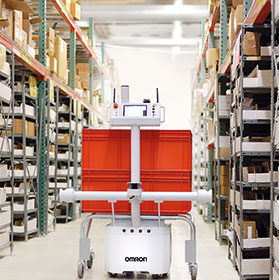

As with many other industries in the world today, food and beverage manufacturers are under immense pressure to increase productivity and sales, while keeping manufacturing costs down. A normal reaction to this dilemma would be to increase production. However, there is pressure from consumers demanding a wider variety of products, new flavours, sugar or gluten-free varieties, or different portion sizes. Increasing production runs is not the simple solution it used to be.
These conflicting pressures have forced the food and beverage manufacturers to adapt production lines to try to satisfy customer demands, without sacrificing productivity. Some manufacturers are looking to install smaller, dedicated lines, while others are trying to ramp up production, adding new lines. In both these cases, the amount of testing required increases. There is also an increased need to transport smaller amounts of produce around the factory. These additional complexities introduce several problems with current production lines.
Identification and traceability
An increase in the number of test samples creates an issue with identification and traceability, which, in turn, requires a robust tracking system be put in place. Furthermore, the need to transport product around the factory is generally accomplished by hand, meaning that the efficiencies gained from automation are being eaten away by additional staffing costs. One alternative method of transporting goods is by using automated guided vehicles (AGVs). These mobile robots can carry a tote from one set position to another. They generally use physical guides to navigate, such as magnets embedded in the floor, or painted lines. The downside to AGVs is that when they are asked to do a different task, the physical navigation guides have also to be moved, which can halt production.
Autonomous intelligent vehicles
One way to solve both these challenges can be found in a new generation of mobile robots. Autonomous intelligent vehicles (AIVs), such as Omron’s LD platform, use sensors to create a static map of their surroundings, so they have no need for physical guides. Initially, all that is required is to take the robot to different positions on the factory floor and let it scan its surroundings. From the map, the AIVs can work out the optimal route between any two points. The sensors are then used to detect moving objects, such as humans, in the AIV’s path. Vertical sensors are also incorporated to ensure the AIV avoids any obstacles, such as spillages on the plant floor, or the overhang from forklifts.
AIVs can work in fleets of up to 100 mobile robots, and the workload is controlled by fleet management software, which can also assist the AIV’s navigation by reporting any busy routes or blockages on the factory floor. If the management software is integrated into the production management system, as is the case with Omron’s Sysmac software, all pickups and drop offs are automatically logged. The AIV can also check it is picking up the correct package by interrogating the machine using WiFi or optical networking. This comprehensive system ensures that the information required for testing is accurate and reliable, cutting down errors and reducing the risk of an expensive quality failure.
AIVs offer different configurations, giving them the flexibility to accomplish a number of tasks in the food and beverage manufacturing plant. For instance, they can have a fixed top, either flat or a lock box, to carry totes, but in this case, they have to be loaded and unloaded by hand. Other fully-automated configurations include conveyors and cart transporters, including Omron’s LD Cart Transporter range, released at the start of 2017.
“For manufacturers and distribution centres, having the flexibility to release manpower from repetitive jobs to more productive employment, while being able to provide comprehensive, fully automated traceability, will be a real game changer in fast paced food production and supply environments,” concludes Adam, Omron mobile projects director, Europe.
| Tel: | +27 11 579 2600 |
| Email: | [email protected] |
| www: | www.industrial.omron.co.za |
| Articles: | More information and articles about Omron Electronics |

© Technews Publishing (Pty) Ltd | All Rights Reserved